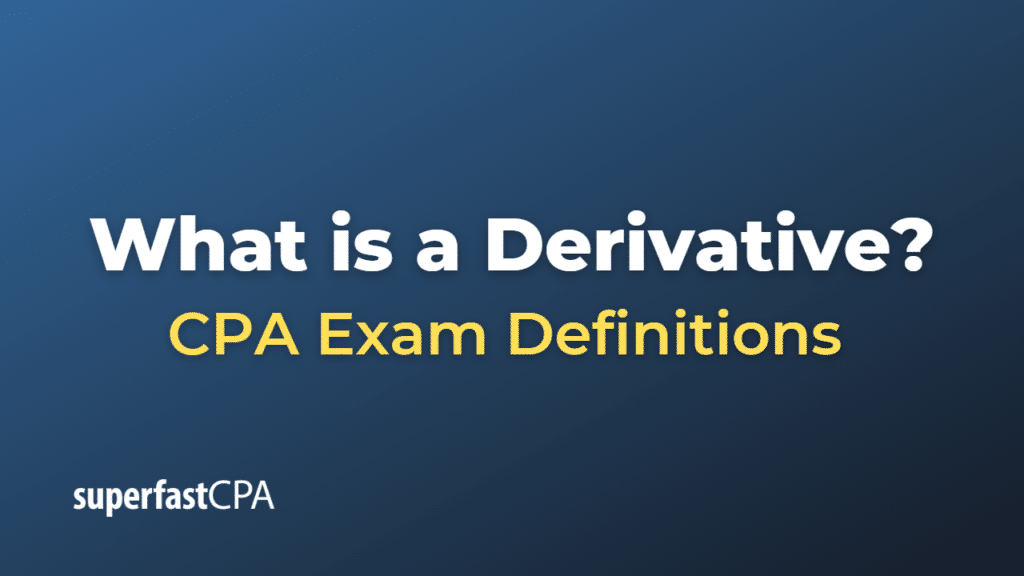Derivative
A derivative is a financial contract whose value is based on (or ‘derived’ from) an underlying asset, index, or interest rate. Common underlying assets include stocks, bonds, commodities, currencies, interest rates, and market indexes.
Derivatives can be used for a number of purposes:
- Hedging Risk: Companies use derivatives to reduce their exposure to various risks. For example, an airline might use fuel futures to protect against the risk of rising oil prices.
- Speculation: Traders can use derivatives to speculate on the future direction of asset prices, hoping to make a profit.
- Access to otherwise inaccessible markets: Derivatives can provide access to assets or markets that an investor or firm might not be able to directly invest in, due to regulations or other constraints.
There are many types of derivatives, but some of the most common include:
- Futures/Forwards: These contracts obligate the buyer to purchase, and the seller to sell, an asset at a set price and future date.
- Options: These contracts give the holder the right, but not the obligation, to buy (call option) or sell (put option) an asset at a set price before a certain date.
- Swaps: These are agreements between two parties to exchange cash flows or other variables associated with different investments.
It’s important to note that derivatives can carry significant risk. Their value is based on the price fluctuations of the underlying asset, so if the price doesn’t move in the direction the holder or trader of the derivative expects, they can incur substantial losses. Additionally, many derivatives are traded on leverage, which can magnify both gains and losses. As a result, understanding the risks associated with derivatives is critical before using them for investment or risk management purposes.
Example of a Derivative
Let’s consider a basic example of a derivative using a call option:
Let’s say you believe that the stock of Company XYZ, currently trading at $50 per share, will increase over the next three months. However, you do not want to buy the stock outright. Instead, you decide to buy a call option, a type of derivative.
A call option gives you the right, but not the obligation, to purchase a stock at a predetermined price, known as the strike price, before a specified expiration date. Suppose you find a three-month call option for Company XYZ with a strike price of $55. This option might cost $5.
By buying the call option, you’re hoping that the stock price of Company XYZ will go up. If, at the end of the three months, Company XYZ is trading at $65, your call option allows you to buy the stock for only $55. If you immediately sell the stock at the current market price ($65), you’ll make a $5 profit per share, minus the $5 you paid for the option, for a total profit of $0 per share. However, if the stock price doesn’t rise above $55, you won’t exercise the option. You’re then out the $5 you spent on the option, but you didn’t risk as much money as if you’d bought the stock outright.
This example illustrates a key point about derivatives: they can allow for substantial profits, but they can also lead to significant losses. In this case, if the price of the stock falls or doesn’t rise enough to cover the cost of the option, you could lose the entire amount you spent on the option.
This is a simplified example and actual options pricing and trading involve more complex factors, but it should give you a basic understanding of how a derivative works.













